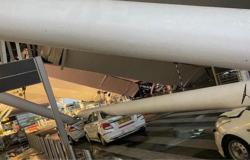Milan, 14 June 2024 – 12:11
IPPC/Hague (Current Regulations)
(Francesco Petrucci)
 Keyword:
Keyword: IPPC/Hague |
Noise |
Controls / Inspections |
Permissions |
Odor emissions
Approved by the Friuli Venezia Giulia Region directions at livestock enterprises subject to integrated environmental authorization (Hague) to reduce noise and odor emissions.
The directorial decree 21 May 2024, n. 24133 effective June 12 provided to intensive breeding companies authorized with Aia pursuant to Legislative Decree 152/2006 a series of directions For improve their own environmental performancein compliance with the “best techniques available” (Best available techniques – BAT) sectors approved by EU Commission decision 2017/302/EU. The European indications – a point of reference for environmental authorizations – state that in order to improve their general environmental performance, the companies I am required to implement And respect a Environmental management system.
The regional provision thus approves the Guidelines for the drafting of the environmental management system manual to allow companies to develop self-monitoring procedures aimed at preventing and managing impacts on the environment. The procedures will be followed by Responsible of the environmental management system which will also have the task of processing a “Floor noise” it’s a “Floor smells” for the preparation of which the Region has approved specific Guides with actions to takemonitoring of the same, interventions in case of disturbing noises or odors.
For what concern noise: adoption of efficient and low-noise machinery, care of the hedges around the farms to reduce noise, maintenance of the equipment. In relation to odor abatement: keeping the litter dry and in aerobic conditions, through natural or forced ventilation; careful management of the removal of livestock effluents; verification of the dimensional and structural capacities of the storage artefacts for correct maturation of the effluent.
By odorous emissions we mean, in general terms, emissions into the atmosphere caused by various sources – including industrial, agricultural and water purification ones – perceived as annoying or harmful odors. According to the current legislation, specific obligations are imposed on those responsible for emissions, including their containment. Here is the examination of the EU (Directive 2015/2193/EU), national (Legislative Decree 152/2006) and regional regulatory provisions of reference
Companies that carry out activities with a potentially high impact on the environment require a particular authorization in order to operate, called an integrated environmental authorization (so-called “Aia”; in English “Integrated Pollution Prevention and Control – IPPC”). The rules on the matter are partly dictated by the National Environmental Code (Legislative Decree 152/2006) and partly directly by the European Union (which establishes the best available techniques to be applied directly to individual sectors). Here is a summary of the regulation, updated to regulation 2024/1244/EU (in force from 22 May 2024) which established the new Industrial Emissions Portal







